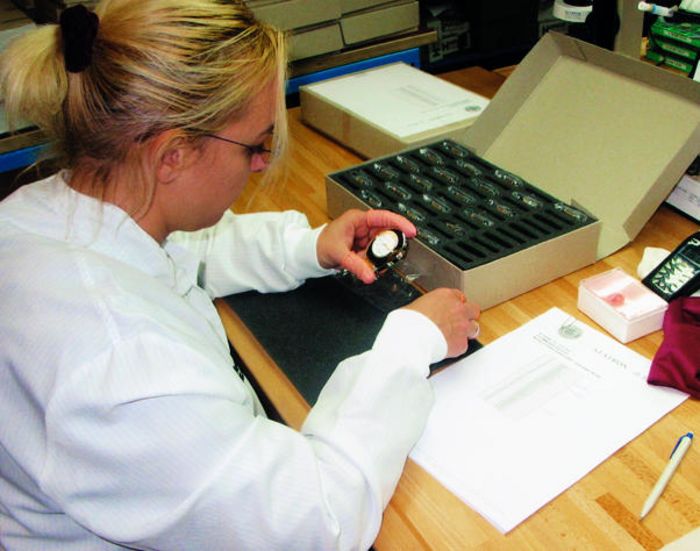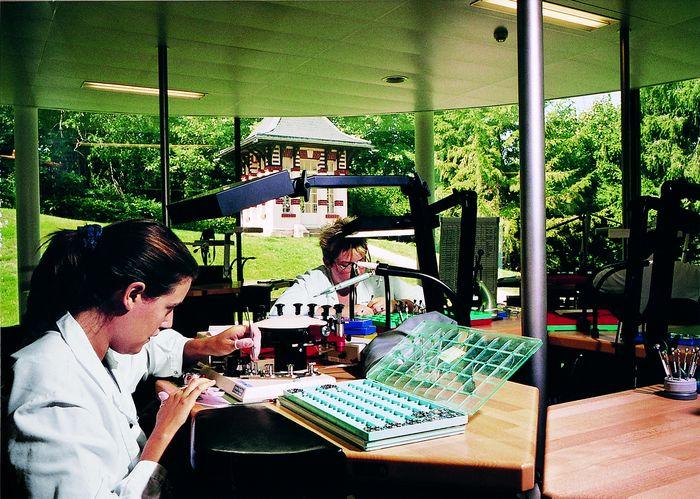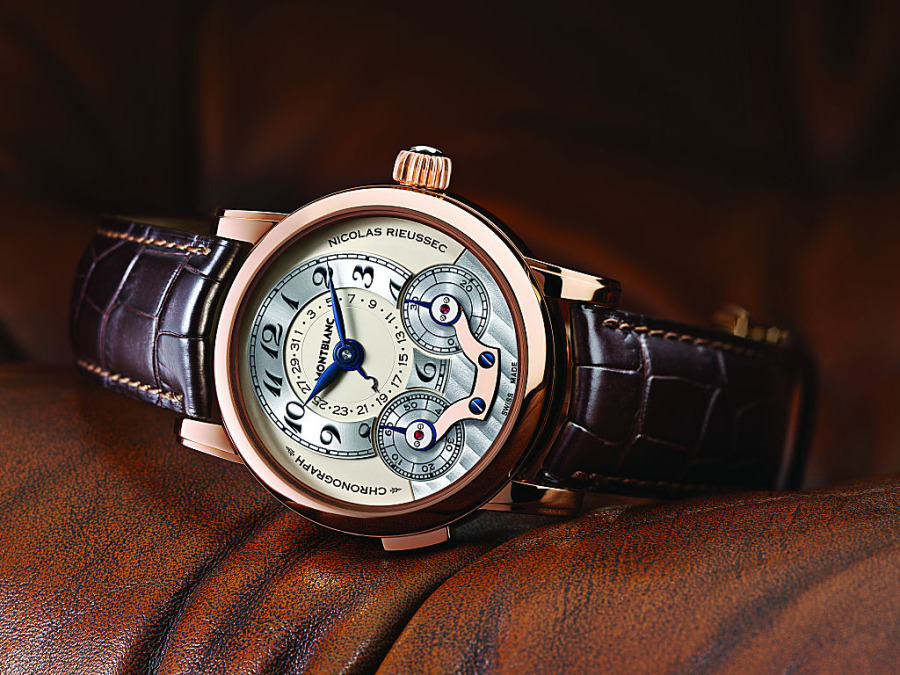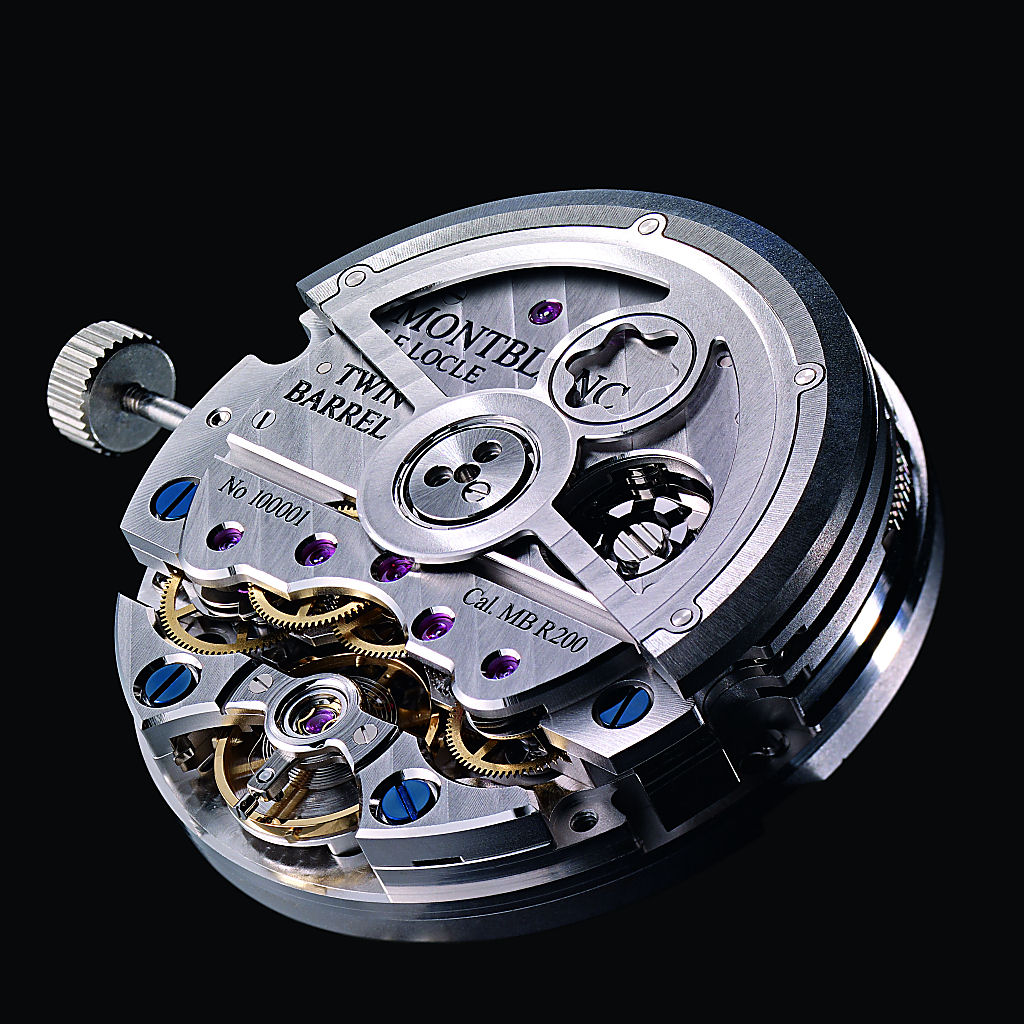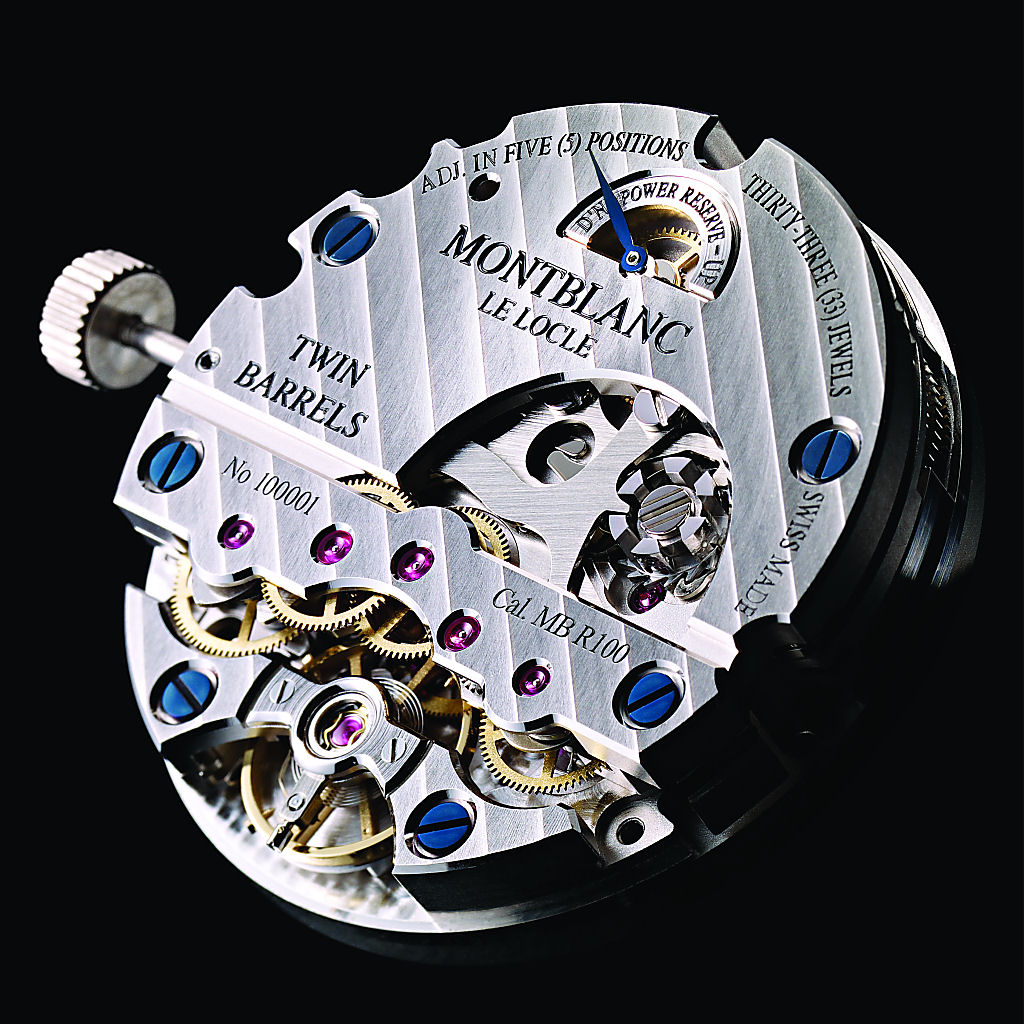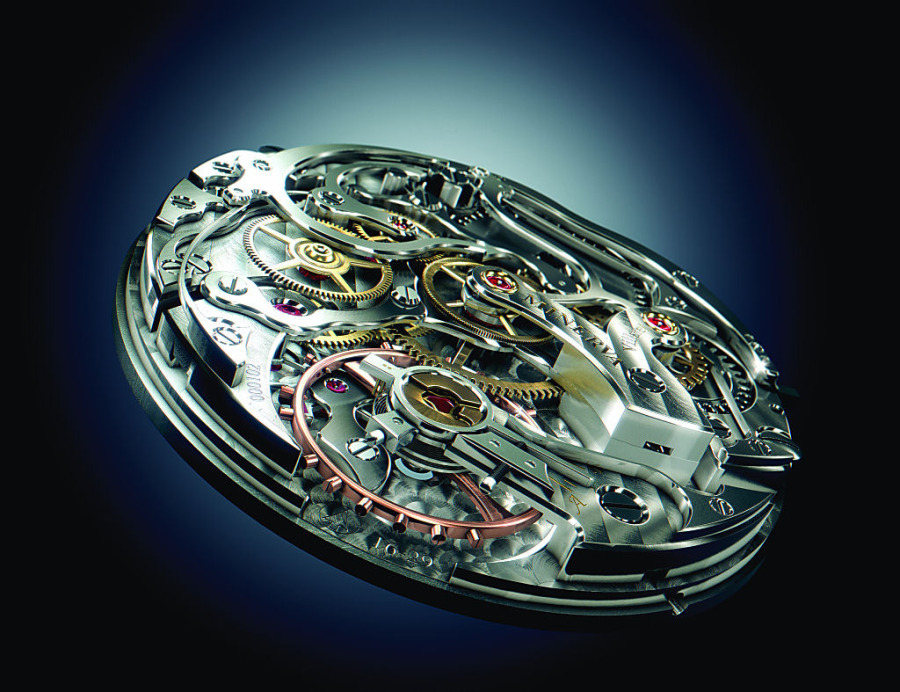A TimeZone Interview with Jan-Patrick Schmitz, President of Montblanc North America
by Michael Sander
Interview conducted September 2010
MS: Michael Sandler - TimeZone.com
JPS: Jan-Patrick Schmitz - Montblanc
MS: Thank you for taking the time to speak with me today. Would you please tell us a little about yourself and your background in the industry, and how you came to Montblanc?
JPS: I joined Montblanc in Hamburg in 1994 as the Controller for Asia Pacific. I moved to Asia in 1996 and became the President and CEO of Montblanc Japan. I had an appreciation for timepieces, but I would not describe myself as having been a watch collector at the time. With my first salary, I bought my first quality watch, from a German company - a Chronoswiss Regulator. In 1997, while I was in Japan as President and CEO, we launched our watches. I stayed in Japan until 2002 and, in 2003, I moved to the Unites States to take over the position I am in today as the President and CEO of Montblanc North America.
MS: For a long time, Montblanc has been known as a writing instrument brand. How was the decision made to evolve the brand to the point where you were producing watches as well?
JPS: You asked me to speak a little about brand evolution. When I go back in time to 1994, prior to timepieces, when we were primarily a writing instrument brand, we sat down and had a global strategy meeting where we developed a strategy called Concentric Circles, and looked at where the brand wanted to go. The reason for this was actually quite simple. We were already a global market leader in writing instruments, but the writing instrument world had changed from being purely a tool which was used in the office every day to an accessory used to write notes, etc., since you would no longer hand-write letters and memos. As a market leader and in order to grow, we knew that we had to expand our line beyond writing instruments, while also strengthening our premium writing instrument positioning. As part of the Concentric Circles strategy, we wanted to develop our product portfolio and widen our distribution to products that made sense for us. So the next step was to go into desk accessories and products focused around writing. Being that we were a masculine brand (which is not a male brand...there is a big difference; a good comparison would be Porsche, which is a masculine brand with powerful luxury cars, but women love it just as much as men do), we added products like cufflinks. Then in 1997 came the big second pillar, watches. Watches have a lot of product DNA similarities to writing instruments. Both are precious. Both are tools. Both are analog. Both are traditional technologies crafted by hand. Both are collectible items. Both are purchased or received to commemorate significant moments. And finally, both writing instruments and watches are handed down to the next generation and can be appreciated for many lifetimes. This is why we made that decision. In 1997, the Swiss watch world was looking at us regarding this decision. I remember a joke from SIHH, when the watches were introduced. The President and CEO of Montblanc Worldwide was asked by a journalist: "Where do you put the ink?" and everyone in the room laughed. But we knew we were on the right track for all of the reasons which I discussed before. Also important is our brand heritage and the fact that we are a craftsmanship brand. This is, of course, the same with watches. Although we are part of the Richemont Group, we decided to set up our own manufacturing. We certainly learned a great deal from our other colleagues and brands about watch making, but we started this endeavor not just to have watches with our name on them, but to become a watch brand and to learn how to make fabulous watches.
MS: As you moved into watches, what was the evolution from the early pieces to the point where you were producing watches more as a true manufacture, using in-house movements?
JPS: The first pieces we produced really looked like a Montblanc pen, as though you took the pen and brought it into the shape of a watch. There was some criticism from watch collectors, at that time, that our watches were too much like our pens. This was not by accident, though, or because we had a lack of creativity, but rather it was done because we knew we had to speak initially to the Montblanc enthusiast. At the beginning, strategically, we were not looking to inspire watch collectors but, rather, we were working to inspire Montblanc collectors. By getting them on to the wrists of people, we created some initial momentum, and we have gradually grown over the years to become appealing to a broader audience. From the beginning, it was always our desire and our strategy and our focus to come out at the right time with our own movement. So we started this knowing that one day we would have our own movement and our own watch, which is the Nicolas Rieussec. When people think of the brand, we want them to know that this is genuine European craftsmanship, with a pure philosophy. We knew we had a couple of years' time before we actually had to come out with our own movement. As time progressed, a big and important line for us was the TimeWalker line, which we launched in the early 2000's. That was probably the first one which, in America, stood out in terms of recognition, from an aesthetics point of view. We created a recognizable face. If you look at watch brands and at watches in general, you really see two broad areas. One is the whole notion of complication and movement and this is, of course, where you find the collectors' focus and the TimeZone readers' focus. There is also the area of brand and aesthetics, and buying a quality, nice, great looking, reliable Swiss watch. This, as I mentioned, was all continuing while we prepared for the Nicolas Rieussec. We knew that this watch would be one of the few historic milestones that any watch company can have. For example, when in 1924, we introduced the black Meisterstück pen and, 85+ years later, it is still here. We knew that in a hundred years, when our great grandchildren are standing at SIHH, that piece will be the one that people will see in the historical showcase. We also wanted to create a design which is definitely unique. This is another thing we especially believe in. If you take any successful watch brand out there, aficionados and collectors will associate a piece with that brand. Think Cartier, close your eyes, most will see the Tank Francaise visually, despite the fact that there are many other beautiful and well selling Cartier watches. The same is true for any other brand. So we knew that from the topic of the dial and the aesthetics which would be part of the DNA that is carried forward, we had to do something unique. That is, for instance, where the smiling bridge came from. We knew we had to create a link to the roots of the brand. We are the world leader in writing instruments. We are a craftsmanship brand. We are a manufacture brand in all the various aspects in which we operate. We did a lot of research and then we came across the wonderful facts around the invention of the chronograph and Nicolas Rieussec. Of course, the term chronograph (chronos - time; graph - writing), "time-writer", is an emotional linkage between pens and watches. And that's where we knew the conceptual basis for the watch. From there, once we had the concept, we moved into the technical part of it, where we had to develop our own movement, and we wanted it to serve a function. So we looked at things like the twin barrel and how to add useful functionality to the watch, even though at the time we did not want to go into the ultra-high complications because it is a milestone which would endure for hundreds of years. The chronograph, in addition to its linkage to writing, is a practical and sought after complication. We developed the movement and we developed the design. We tried to make it a coherent watch which fulfills all of these aspects and which would "Wow!" everyone. It would be a watch we could be very proud of, the same way we are proud of our Meisterstück pens.
MS: You also have, as part of your collection, the beautiful Villeret line. Can you speak a little about that particular line, and the Minerva acquisition?
JPS: In life, as well in business, in order to be a success, you need a few ingredients. One is determination. Another is a strong plan and to focus on it. The third component is luck. That luck really appeared when the Richemont Group had the opportunity to acquire Minerva. I was personally not involved, so I cannot speak about all the intricacies involved in that. As I mentioned, we had started our brand evolution in the 1990's. Given the nature of our company and our history, we also wanted to play in the league of the best. So when we were able to acquire Minerva, from the beginning, we knew and fully understood the philosophy and the character of the manufacture. Looking at the history, the assets, the people, and the skills...they were a special manufacture. The skill level is second to none. Knowing that, we had a match. From the beginning, it was very clear that we respected and wanted to maintain the history. Therefore, we made a couple of very important decisions. The first was that every movement reads "Villeret". The case reads Montblanc as well as the dial; all the emblems on the watch read Montblanc and it became the Montblanc Villeret collection, but the movement says "Villeret". As you know, in Villeret, we make over 90% of all the pieces that go into these watches. They are actually done in-house. There is a tremendous amount of skill there but we have to be sure this continues. You have to sit down today and plan for the future by understanding where the manufacture will be in eight years, or fifteen years, so we are actually prepared for the future. That was the second step, after we made the decision to maintain the history. We speak proudly of it and communicate it. After all, it is a wonderful, pure manufacture, which specialists and collectors know about but which everyone should know about. The third step is that we want to show innovation, as we are doing today in our writing instruments. We want to bring amazing new movements. We want to inspire and excite and to maintain this heritage by showing new technical ideas. So why do all this? At some point in the not-too-distant future, watches will actually be the biggest part of our business.
MS: Would it be possible for you to give us some information about your total annual watch production?
JPS: I'm afraid we do not publish those numbers. We have two manufacturing facilities, in Le Locle and in Villeret. Le Locle is already going through its third expansion. It is where the Rieussecs are produced, along with the TimeWalkers and the other collections. And then, of course, we have Villeret, where we have done what we can to respect and maintain what was already there. If you go there now, you will see that we restored what was there. We preserve the place and, at the same time, train new generations of people who craft these watches, in the same way it was done back then.
MS: What is your view of the U.S. Watch market? Do you see this market, and it's appreciation for high end watches, growing? Do you see the market becoming more aware of the higher end watch brands like Montblanc?
JPS: There are a couple of really important points here. If you look at the really big picture, there are some fundamental differences in the markets. If you take Europe and America....in Europe you have what I call a lot of "inherited understanding" of luxury things. It means that people grow up in families where there is already familiarity. For example, my great-grandfather had an IWC pocket watch from the 1920's which he then handed down; you grow up over generations with people having that exposure. There's a culture of inheritance. If you look at America, it is more a culture of achievement. There are people here who, when they are successful, they start appreciating fine things. They will go out and try to find what they can enjoy with the achievements they have made. There are a couple of implications. The first is that we have a much higher need to educate the consumers here. I knew what IWC was when I was four years old. Obviously, I didn't appreciate the value, but my grandfather had one, and my father had one, and they told me that one day I might have one. Here, I think that element is missing. Then you have the pricing issue. Prices are only a big issue when there is a lack of understanding of the value behind them; the value of creation; the value of history; the value of craftsmanship, etc. This creates an environment in need of education more than in most other markets. There ultimately is a strong development of pure symbolism. So what does that mean? If you take the Swiss watch market by and large, you have the sophisticated collectors (like the TimeZone community) and then you have the brand-minded consumer. I don't mean that disrespectfully in any form or shape. These are people who want a good product which is recognizable and understood and is of great quality. They buy it as a symbol of achievement. They don't buy it because they are fascinated by the mechanical movement which has hundreds of pieces that are made by hand. This is the type of consumer that is in America. For the most part, the proportion of "brand buyer" versus "collector" is larger in America, and I believe that it will be so for a long time. If you look at the collectors, America is also special. When you look at only that group, the American collector base is, by and large, much more knowledgeable and much more serious than most others. Once they get into it (and that's the result of all that education), they are very intense. Asia is very different because it always had a high appreciation for craftsmanship, both in the Chinese and Japanese cultures. There is also a lot of brand consciousness there as well. In America, over the last forty to sixty years, our society has turned somewhat away from manufacturing and has become more service- oriented and high-tech oriented. The level of appreciation for sophisticatedly creative things (for example, fine furniture with beautiful wood joints, where not a single nail is used, etc.) is not there for the average American. To finish this thought...if you look at the total population, wealth and potential, America is a vastly under-developed market, not only for us, but as an industry. The second thing, of course, is that the balance between the collector watch customer and the brand watch customer is very focused on the brand, and this creates a large potential as well. Once a customer understands and appreciates what goes into it, then Americans are the best customers to have. They are very loyal and willing to spend money. There is a thirst for information, which helps shape the customer.
MS: Given that Montblanc is part of a larger organization, Richemont, can you speak to what you see as the advantages and disadvantages of such an arrangement?
JPS: I will speak candidly here, even though it might not sound like I am doing so. I truly believe, irrespective of the fact that I am on the payroll, that Richemont has a close to perfect setup. The leadership of Richemont often speaks of the need to maintain the heritage of the companies and brands, and to actually avoid too much talk about all of our "family ties". Of course, if you are a collector or very knowledgeable about the industry, then you immediately know about all these family ties; we don't promote them. The overwhelming majority of customers, outside the collectors, don't know how we are connected. That is really important, because people buy a brand when that brand is pure and true. A Montblanc really looks like a Montblanc. A Montblanc really feels like a Montblanc. It is a Montblanc, and it is a little Teutonic. It is communicated that way. It is part of the heritage of our brand. The Swiss brands and the French brands have their own DNA as well. The companies are like brothers who truly love each other, but we are competitive; that is part of our culture. At the end of the day, we have a drink together and celebrate our success. We do compete but there are tremendous advantages to being a part of a big group.
MS: What about the sharing of technical resources, new technologies, and/or talent? Does this happen within the Richemont group of companies?
JPS: I'm personally not that closely involved in that side of the business, so I can't fully say. I know we have a friendly relationship, and that people move across brands and, of course, their knowledge goes along with them. From a market point of view, I can tell you that we've consolidated all our customer care and after-sales services here in America. So you can see a very interesting structure of synergies and separatism at the same time. Certain parts are synergistic in terms of finishing, polishing, etc., but then you see teams of people who only work on the specific brands. For example, there is the head watchmaker for Montblanc and his team of watchmakers, and then there is a different team for IWC and all the other brands respectively. Of course, since they sit near each other, they talk and share their knowledge informally, even with the brand focused set-up and the training which goes across the brands. In terms of distribution, we don't go in as Richemont to a given jeweler and say: "Look, here is our stable of brands". I represent Montblanc, and my colleagues from the other companies speak for their brand. Although you may be in the safety of a family, you still have to struggle your own struggle. I think it makes each brand stronger. I think, from a collector's standpoint, you get a better product, because you get a passionate brand run by passionate people, rather than a big conglomerate.
MS: Given that we're doing this interview for an internet based watch site, I'd like to ask you how you think the Internet has impacted the watch industry, and also where you think it is going over the coming years?
JPS: Particularly for collectors, it is the ultimate in terms of information distribution and really being able to share your passion. It is an amazing platform for connecting with fellow collectors and being able to exchange information and knowledge that would be impossible without the Internet. I think all watch brands that care about what they are doing are now engaged in that world and are listening, because you can learn an awful lot from these collectors. This doesn't always shape what you do, but it brings you into connection with a much larger group of people. From a retailing point of view, the Internet is lending itself to destroying some of the value I was talking about earlier, and to making everything a commodity. In the end, because you are remote and just looking at pictures and words, it becomes a commodity. When things become a commodity, especially complicated watches which are passionate and emotional purchases, there is something missing. If you just have a picture sitting on your computer at home, you don't get the full story. By and large, though, I think the industry is learning to get the most out of it by thinking about how to communicate using the technology. I think there's actually an exciting opportunity in using the abilities of these various platforms (iPad, iPhone, etc.) to convey information and to educate the customer. If you look at print advertising, it is very one dimensional. We are looking into ways that will allow you to actually dive into the movement, and to help you to visualize three dimensions on the screen. Eventually, to help overcome that lack of value appreciation, I think the power of the educational side can create value instead; but it's truly a challenge. I think a lot of brands in the beginning hoped that the Internet would simply go away. But it hasn't, and they have had to make peace with it. Now it is a matter of making use of it in the right ways.
MS: We have a traditional final question here on TimeZone, so I will ask you as well. What watch are you wearing today?
JPS: This is my favorite watch that I have. It is the Nicolas Rieussec chronograph in rose gold. There are two things that I feel are important about this watch. First, it will be the one that I will pass down to my son one day and, second, it is a piece of history for me because I have been so involved with the brand and this particular watch. I love the uniqueness of both the complication as well as the design of it.
MS: Thank you so much for spending time speaking with me and for so candidly and openly sharing your thoughts with the participants on TimeZone.com.

